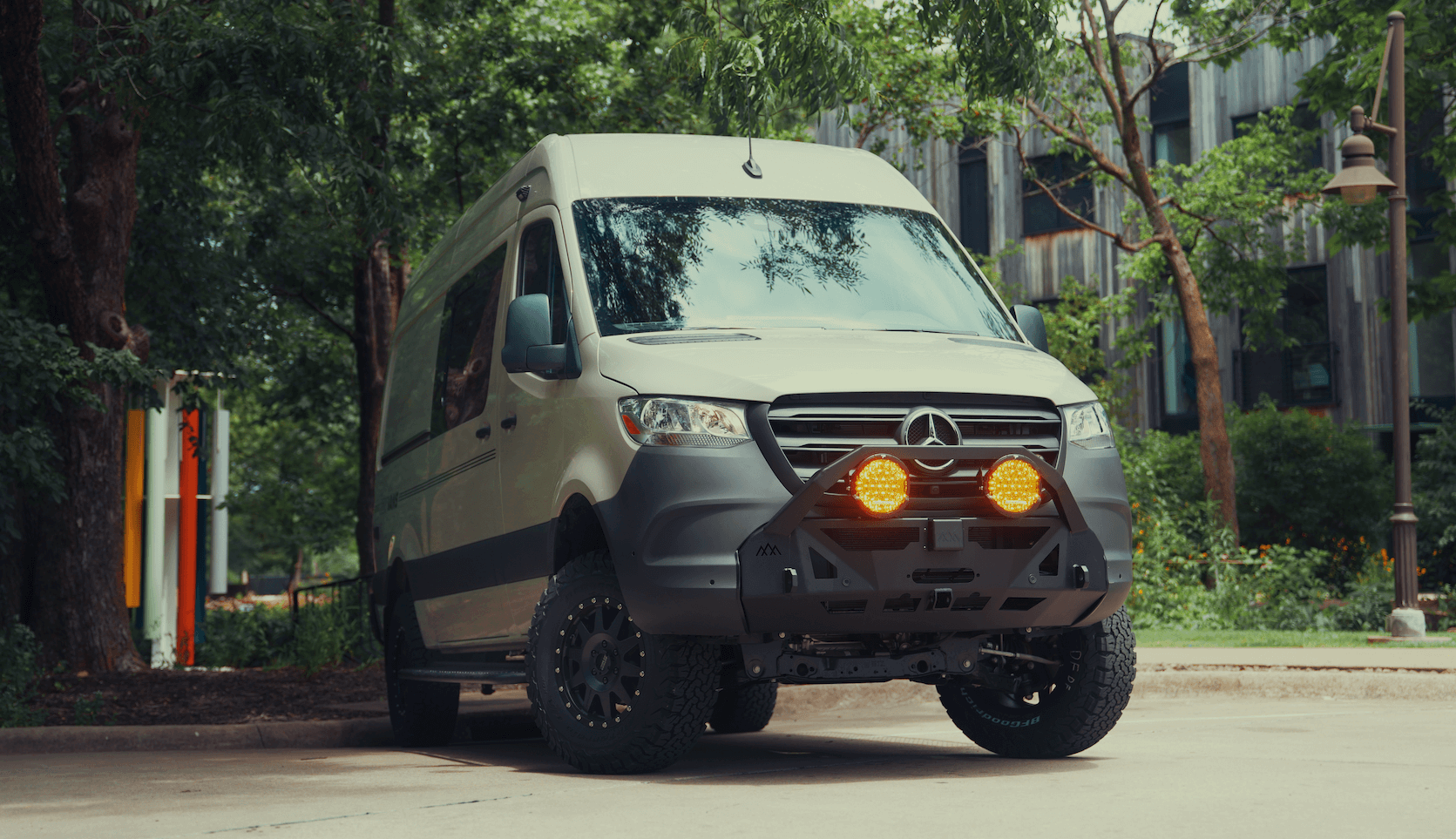Recreational Vans

Thermal bridges are the shortcut that heat takes through a structure when it finds a more conductive path than the insulated areas around it. In a building wall that path is often a metal stud or concrete slab edge. In a van, it is the steel rib, door frame, roof crossmember, window trim ring, or a fastener that ties exterior sheet metal straight to the interior panel. These bypasses undermine the rated R value of the assembly, lead to cold or hot spots, and start the condensation cycle.
Thermal bridging affects three things at once:
Think of the envelope as a bowl trying to hold temperature. A thermal bridge is a notch carved into that bowl. No matter how much insulation you add elsewhere, the notch spills heat. In mobile rigs, the stakes are higher because thin sheet metal conducts rapidly and outdoor conditions change quickly.
You can quantify their impact by looking beyond nominal R value to whole assembly performance. Metrics like linear transmittance and equivalent U factor help describe losses at edges and penetrations. In vans and tiny envelopes, a few linear feet of exposed metal can dominate the heat flow.
The aim is simple. Keep insulation continuous, break the metal to metal path whenever you can, and control air movement so humid air does not hit cold surfaces.
Add a continuous insulation layer inside the shell A continuous layer limits exposed metal. In vans, that can be compressible fiber in cavities plus a contiguous blanket or panel over ribs before wall panels go on. On floors, use insulation between sleepers and a continuous sheet under the subfloor.
Insert thermal breaks at contact points Isolate metal brackets, furring, and sleepers from the body with gaskets or pads made from dense rubber, cork composite, fiberglass reinforced polymer, or high density polyethylene. Use non metal bushings and isolator washers on through bolts to reduce conduction. Even a few millimeters of thermal break material can raise interior surface temperatures enough to avoid condensation.
Choose smarter furring and attachment strategies Instead of metal studs, consider wood furring or composite channels attached over isolators. Minimize the number of fasteners that contact bare sheet metal. Where adhesives are appropriate, they can reduce the count of conductive screws or rivets.
Manage windows, doors, and seals Windows conduct heavily. Insulated curtains, tight fitting magnetic covers, and frames with thermal breaks help a lot. Pay attention to door seams and gaskets to limit cold air wash that cools interior surfaces.
Seal the air, not the assembly Air control is crucial. A careful air seal around penetrations, wiring chases, fan flanges, and floor edges prevents humid interior air from reaching cold metal. Use compatible sealants and grommets, and avoid trapping moisture with an impermeable layer in the wrong place. In mixed climates, a smart vapor retarder behind finishes can moderate seasonal moisture drives.
Plan for serviceability Thermal performance is not set and forget. Choose details that can be inspected and maintained. Removable window covers, accessible fasteners, and service hatches let you correct an issue before it becomes mold or corrosion.
You get what you verify. Thermal bridge mitigation benefits from quick, practical tests that fit a shop or driveway schedule.
Thermal imaging on a cold or hot day An infrared scan will paint the stripes where metal conducts. Do this with a good temperature delta and let the interior stabilize before scanning. Look at seams, ribs, and hardware. Aim for uniform tones rather than hot and cold streaks.
Surface temperature and humidity logging Small sensors on suspect spots tell you whether you approach dew point overnight. If a surface repeatedly dips below the dew point of interior air, add insulation continuity or a thermal break and tighten the air seal.
Visual checks after weather swings After a rain and temperature change, pull an access panel and look for moisture beads or darkened insulation. Early signs let you correct the path and protect finishes.
Design choices decide whether your envelope feels consistent in winter mornings and summer afternoons. Favor assemblies that keep insulation continuous, place thermal breaks wherever components meet metal, and seal air at the interior side so moisture never finds a cold target. The result is a quieter cabin, less heater run time, more stable batteries, and finishes that look fresh years later.
When you are ready to translate the plan into a real van, choose a builder that treats the envelope like a system. That means balancing acoustic performance, thermal performance, and serviceability while integrating cabinetry, power, and plumbing. It also means verifying results with thermal imaging and moisture checks before handoff so your first trip does not become a test lab.
OZK Customs brings building science discipline to recreational van envelopes. Our team designs continuous insulation layers, isolates structural contact points with durable thermal breaks, and seals air where it matters so condensation never finds a foothold. We tailor assemblies to your climate and travel patterns, then validate with on bench checks and real vehicle scans. If you want a van that holds temperature, stays dry, and keeps power demand predictable on long routes, we are ready to build it.
Tell us how and where you travel.
We will map the envelope, choose materials, and detail thermal breaks.
You get a rig that feels right in every season.
What we build OZK Customs in Fayetteville Arkansas designs and builds recreational adventure vans with complete custom envelopes, thoughtful interiors, and reliable systems. From platform selection to final verification, our focus is functional comfort, safe travel, and efficient power use. Book a consult to align your goals with a thermally sound build path.
Ready to stop condensation, drafts, and energy loss in your future van build? Talk with OZK Customs to plan a thermally efficient envelope that feels steady in every season. Request your consult and get a build path that protects comfort, gear, and battery life.
ADDRESS:
6159 E Huntsville Rd, Fayetteville, AR 72701
PHONE:
(479) 326-9200
EMAIL:
info@ozkvans.com